These are the best electric scooters we've tested for commutes, hill rides and grocery runs
Here are our top picks for the best electric scooters for adults, kids and commuters, based on hundreds of hours of testing
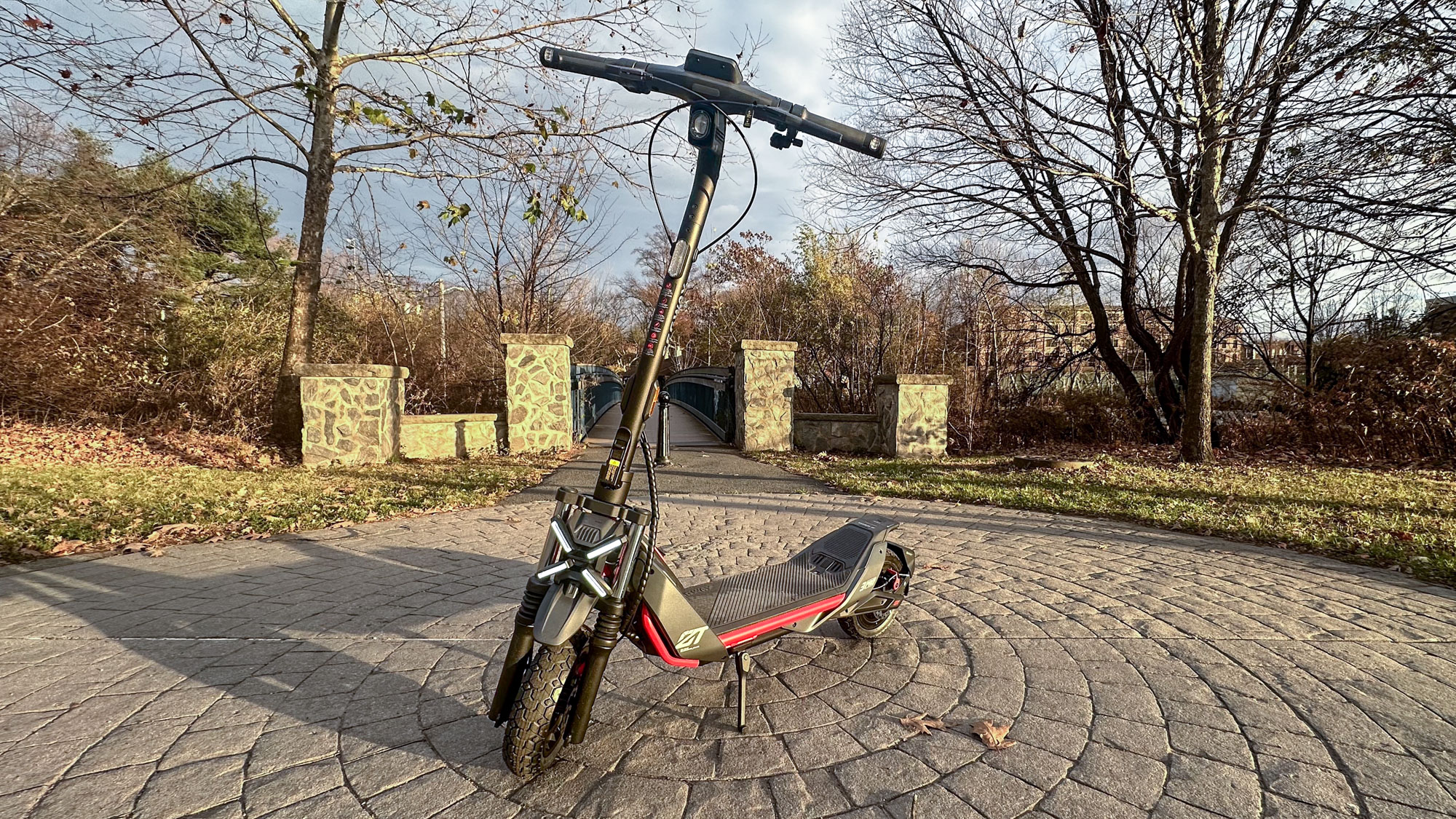
After testing dozens of scooters for more than five years, ranging from models that cost less than $200 to ones that cost more than $1,500, I think the best electric scooter for most people is the Segway E3 Pro.
This midrange model has good range, a comfortable top speed, a great design, and some nice extras, like turn signals and integration with Apple's Find My network. For what it offers at its price, it's a good value.
If you're looking for something that doesn't hit your wallet as hard, NIU also makes my favorite budget scooter, the NIU KQi 100P. This model costs less than $400, but if your needs are modest, it can get you around comfortably. Just don't expect it to perform well on hills, or take you for extra-long rides.
As part of our evaluations, I've ridden electric scooters for hundreds of miles, taken them up and down hills, on subways and trains, through cities and suburbs, to see how well they perform in a variety of conditions.
Whether you need a scooter to get back and forth to school or work, a scooter that can go the distance, or a scooter that can help you haul groceries from the store, we have a pick for you.
The quick list
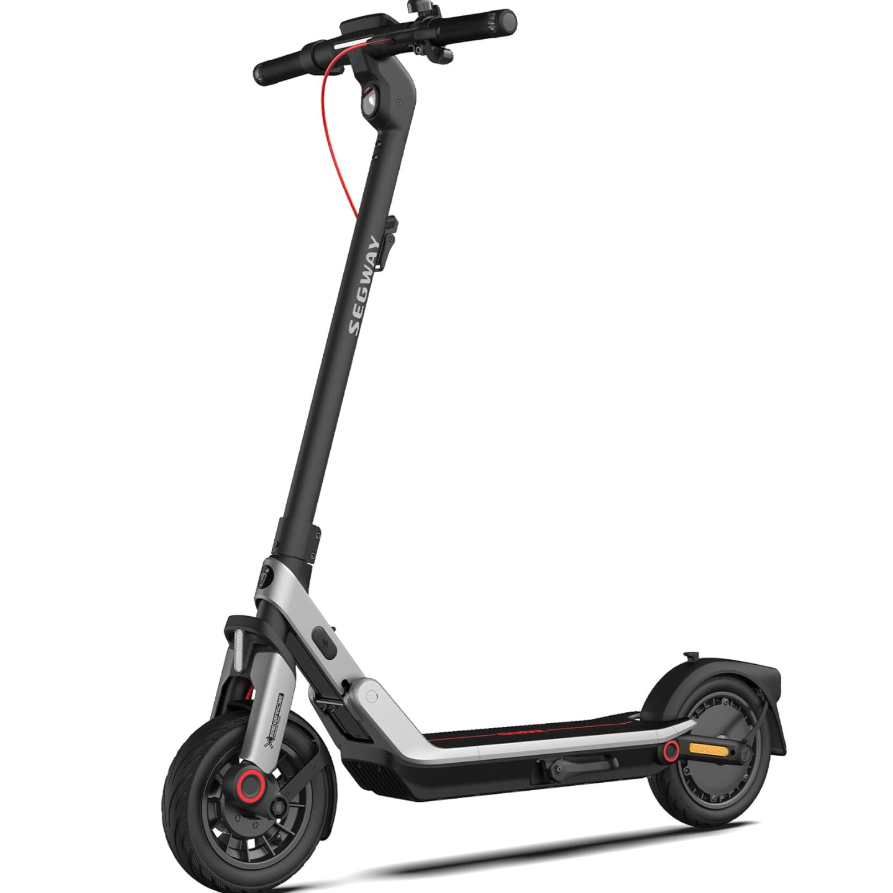
While this scooter isn't going to blow you away in any one area, it will get you where you need to go, has a great design, and has some nice extra safety and security features at a reasonable price
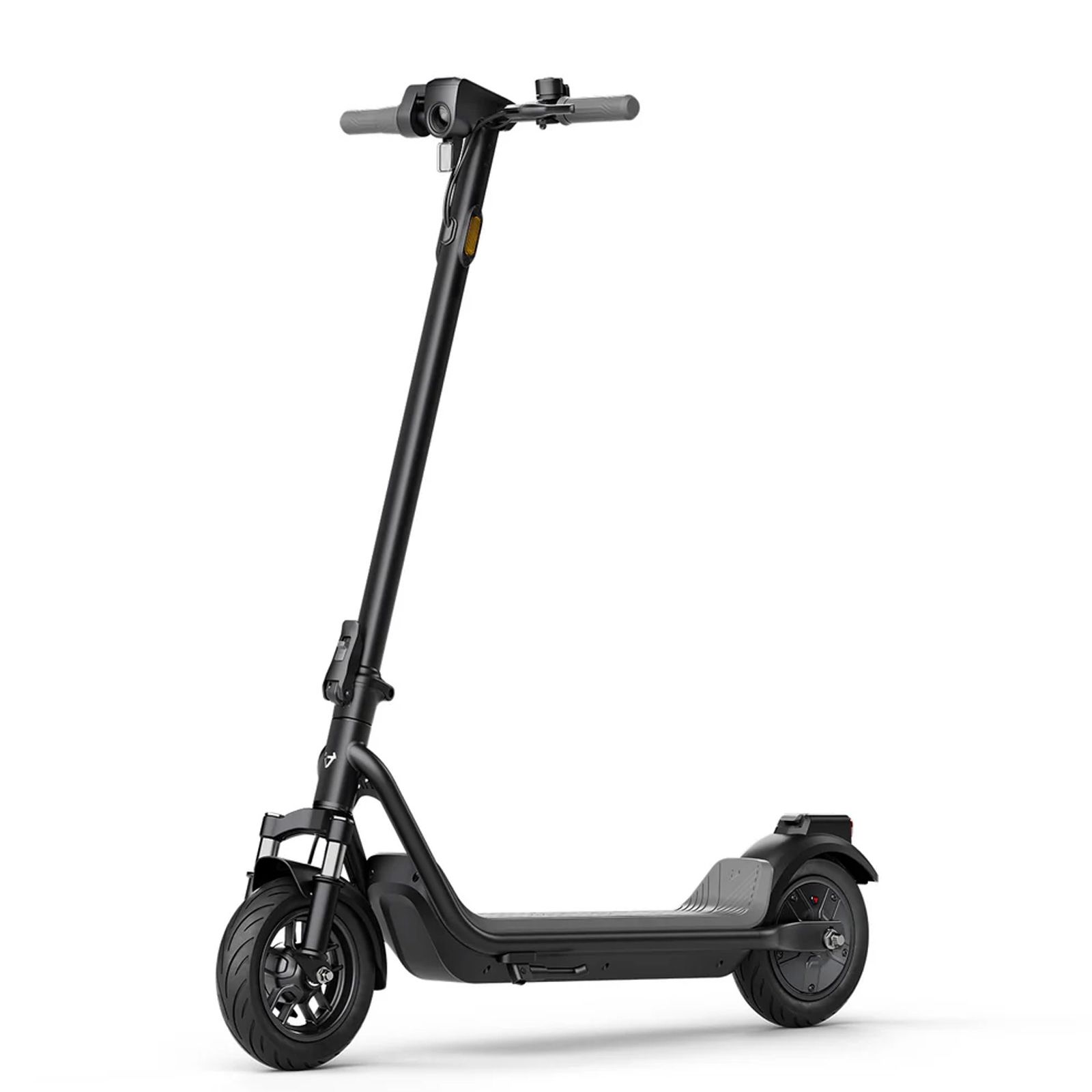
This scooter costs less than $400, but will get you where you need to go. While not the most powerful, it's light and compact, and has large tires to smooth out the road.
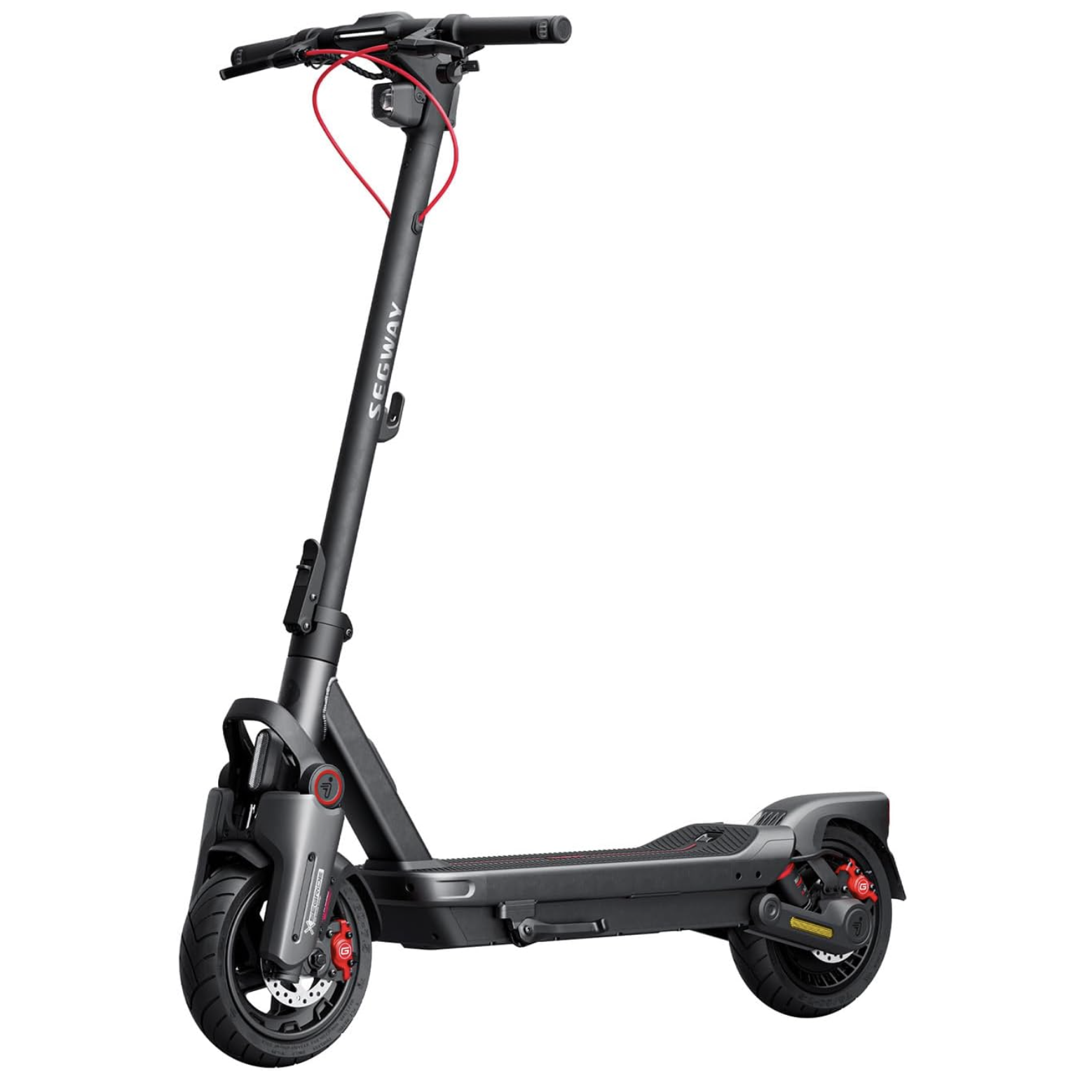
With a top range of 50 miles and a max speed of 28 mph, this scooter will get you where you need to go — wherever it is. This third-gen model also has a sportier design.
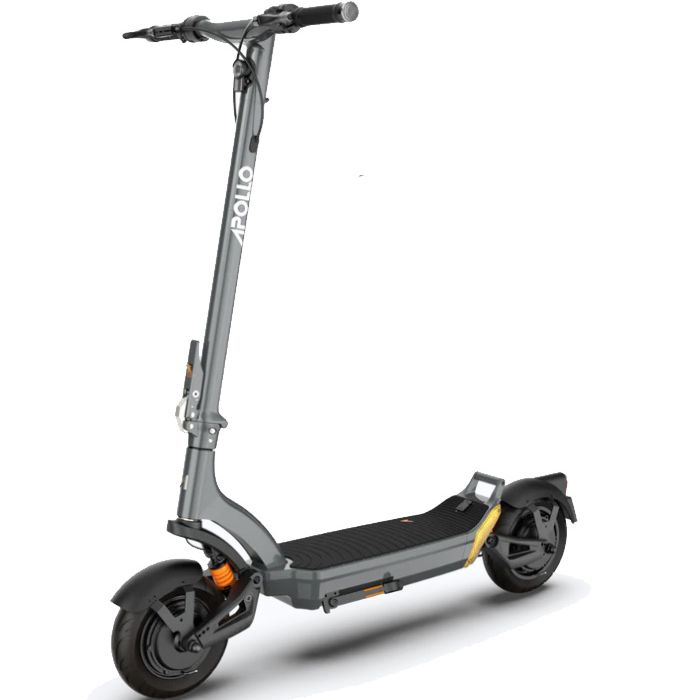
With a top speed of 32 mph, this scooter will let you keep up with most city traffic, and has the power to get you up steep hills. It also has turn signals, full suspension, a powerful motor and excellent range.
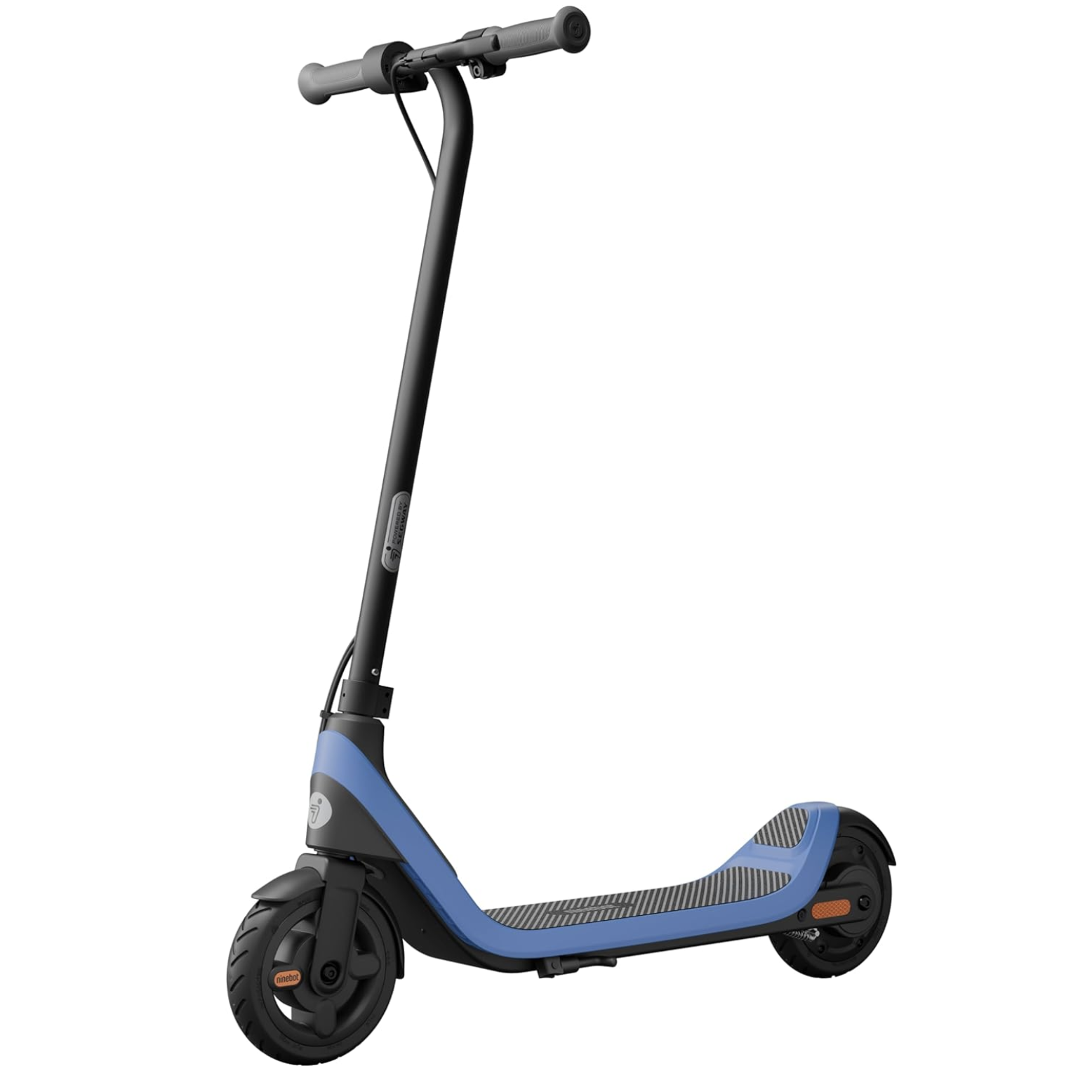
This fun scooter looks great and give your kids plenty of thrills — safely — as they learn to ride. It doesn't go too fast or too far, and is easy to learn.
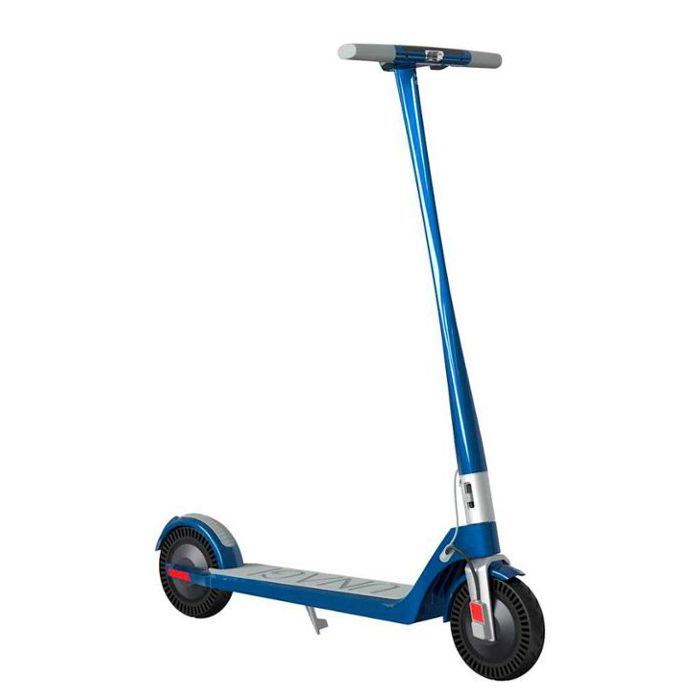
The Unagi Model One Voyager is incredibly light and its dual motors gives it more power than most electric scooters its size. However, its rubber wheels make for a rougher ride.
View more scooters

With a large basket in the rear, the Balto is great for a trip to the grocery store. And, it folds up into a very compact space, making it great for apartments.
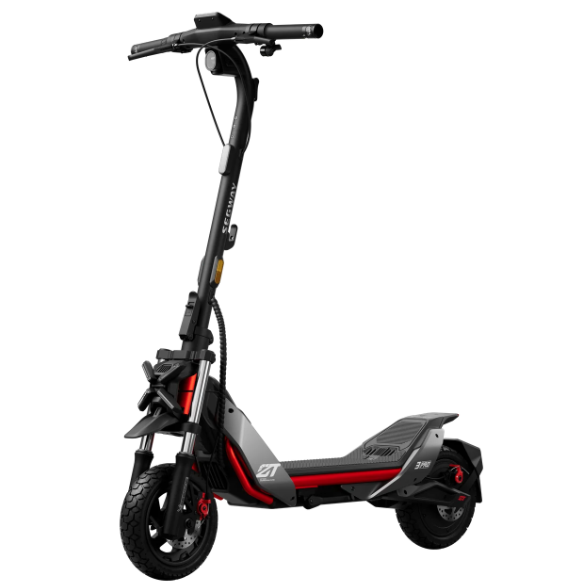
With nice, large tires, full suspension, and plenty of low-end torque, the ZT3 Pro can take you almost anywhere on or off road.
The best electric scooters available right now
Why you can trust Tom's Guide
Best electric scooter overall
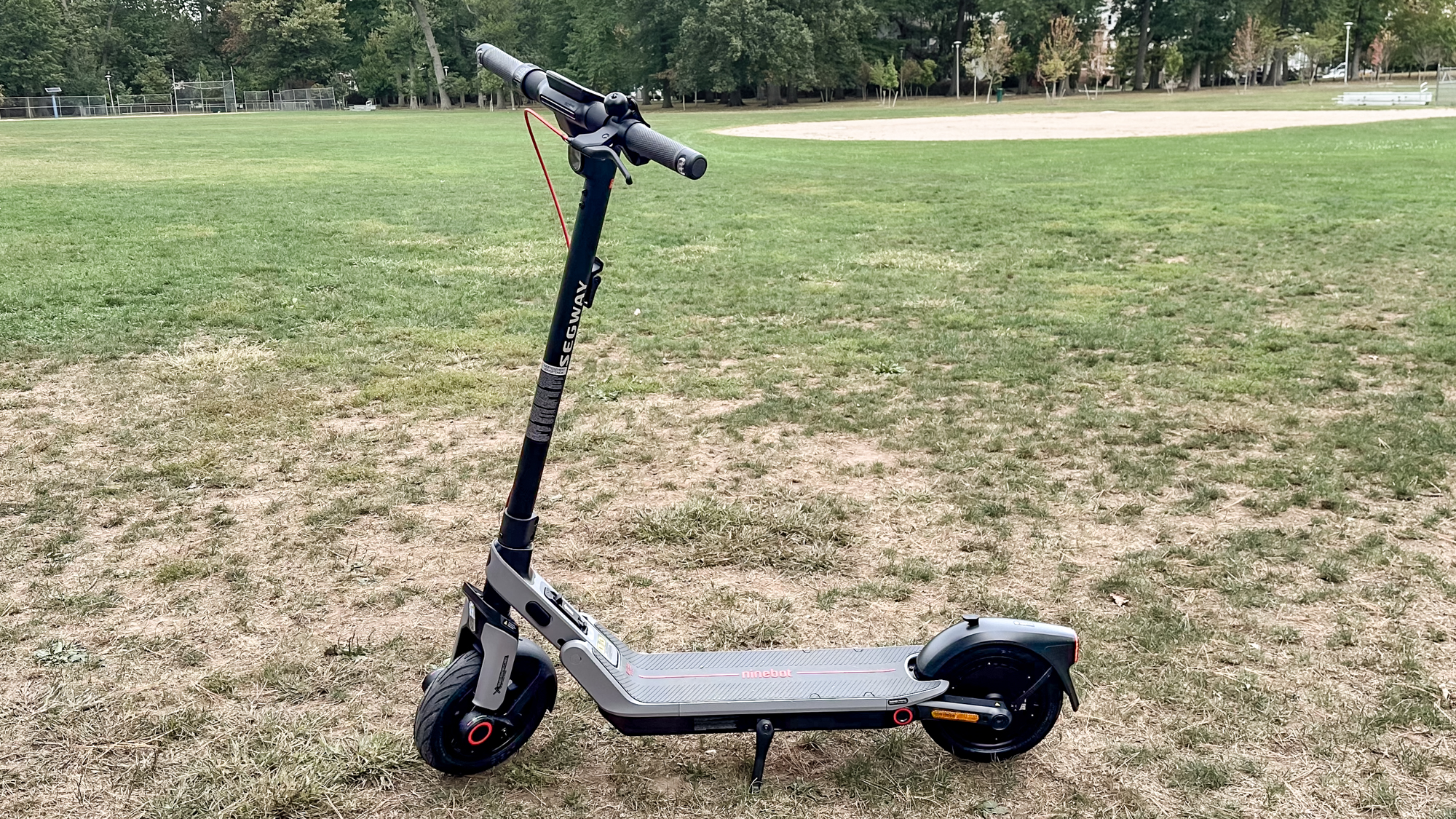

Specifications
Reasons to buy
Reasons to avoid
✅ You're looking for good value At around $600, the E3 Pro delivers above-average performance in a great design, and includes some nice extra features, like turn signals and integration with Apple's Find My network.
❌ You need to get up really steep hills: While the E3 Pro was good at getting up most hills, it's not the strongest, so you'll find yourself recharging it far more often.
The Segway E3 Pro isn't the fastest, nor the lightest, nor the most powerful, nor the least expensive scooter I've ever tested. But you know what? It's plenty fast, plenty powerful, and priced just right for the vast majority of people who are looking for a dependable ride, with a few extra niceties thrown in.
I found the E3 Pro's top speed of 20 mph easily fast enough for cruising around town, and while it wasn't a hill champ like the Apollo City, it was able to get be from the train station to my home just fine.
I did find myself having to charge it more often, as the inclines did drain the E3 Pro's battery faster, giving me a much shorter range than the advertised 17.5 miles when using its highest speed setting. (You only get up to 34 miles if you poke along as a very slow 9 mph).
The E3 Pro is also well-designed, with a new folding mechanism that's a lot easier to use. And, it has turn signals in the handlebars (I wish they were in the deck, too), as well as some fun rainbow LEDs on the underside of the scooter.
You also get dual suspension (not often seen on a scooter at this price), traction control, and Apple Find My integration; I still use a bike lock to secure the scooter, but it's nice having a little bit of extra protection in case it goes missing.
- Read our full Segway E3 Pro review
Best budget electric scooter
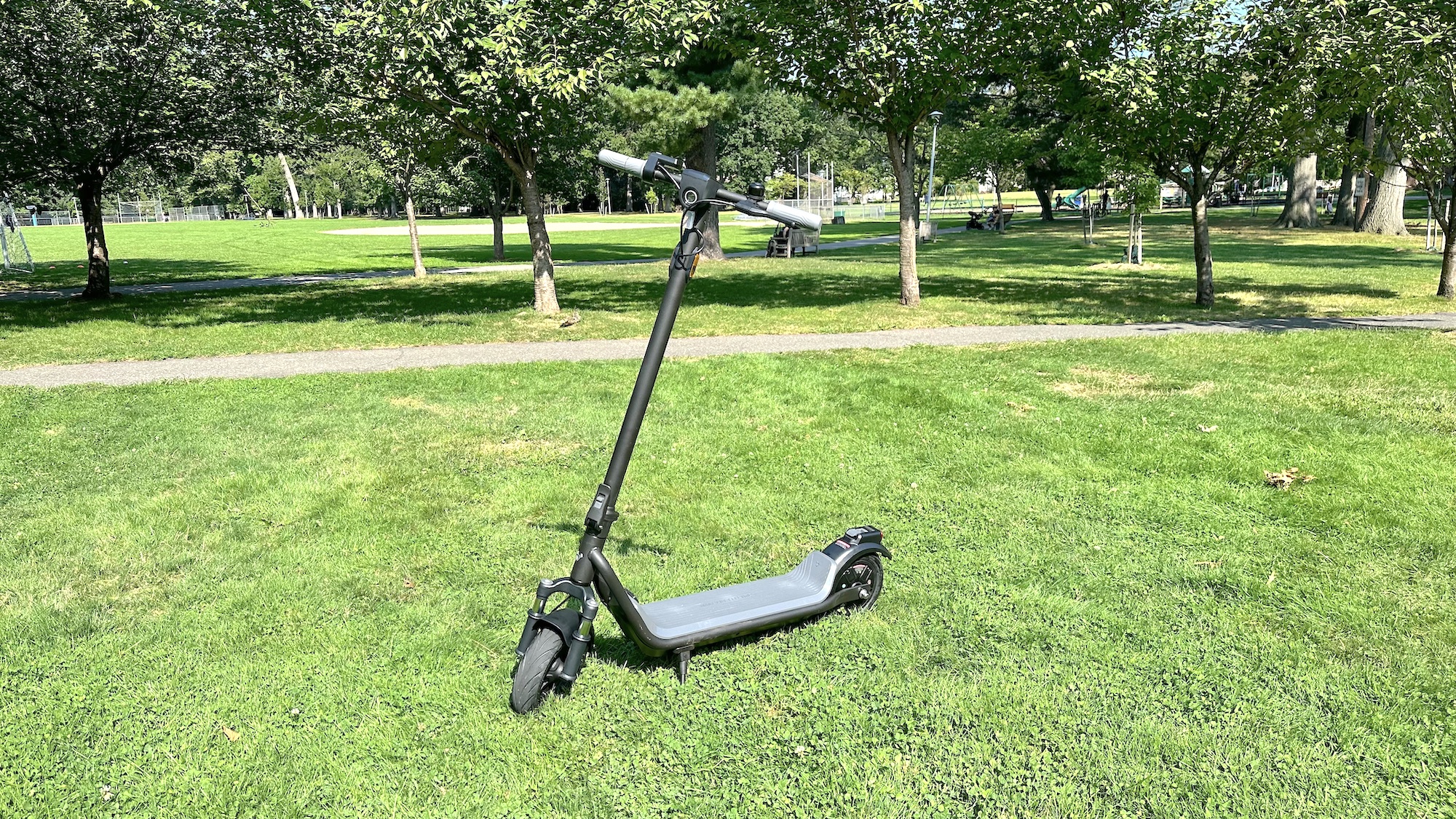

Specifications
Reasons to buy
Reasons to avoid
✅ You're on a budget At $349, this is a real bargain for a scooter, undercutting the competition by at least $50.
❌ You've got a long commute: With an advertised range of 18 miles — much less in practice — you're going to have to charge this scooter up every night if you have a ways to go between your home and office.
❌ You live in a hilly area: The 100P's specs are on a par with other scooters in its price range, which means that it's going to struggle on hills, especially if you're a larger rider.
With a starting price of less than $400, the NIU KQi 100P undercuts many comparable electric scooters by a good amount, yet doesn't compromise on features or performance.
Black with gray accents, the KQi 100P has a fairly clean design, as the scooter's cables are routed through its body. Its headlight was enough to illuminate my way home in the dark, but I wish it could have been brighter.
For a budget scooter, the KQi 100P offered a very smooth ride, thanks to its large 9.5 x 2.3-inch tires and front suspension, and it has a nice folding mechanism for when you want to store it. And, if you connect it with NIU's app, you can lock the scooter via Bluetooth, and set an alarm if someone tries to steal it.
Make no mistake, though — this scooter's specs are far more modest than the other models on this list. With a 300W motor, a max speed of 17 miles per hour and a hypothetical range of 18 miles (I got about 10 in practice), this isn't a scooter designed for long distances or big hills.
But, if you're riding on flat terrain, or looking for an electric scooter for your teen who's ready to graduate from one of the best electric scooters for kids, this is a pretty good option.
The KQi 100P unseated the Hiboy S2 as my favorite budget scooter. Both performed similarly in my tests; the Hiboy is lighter, so it's easier to carry around, but the KQi is significantly cheaper.
If you want something more compact — and with turn signals — you should check out the NIU KQi 100F, which costs $100 more, but has handlebars that fold down, and features flashers in the handlebars to let traffic know which way you're going.
- Read our full NIU KQi 100P review
Best electric scooter for long distances
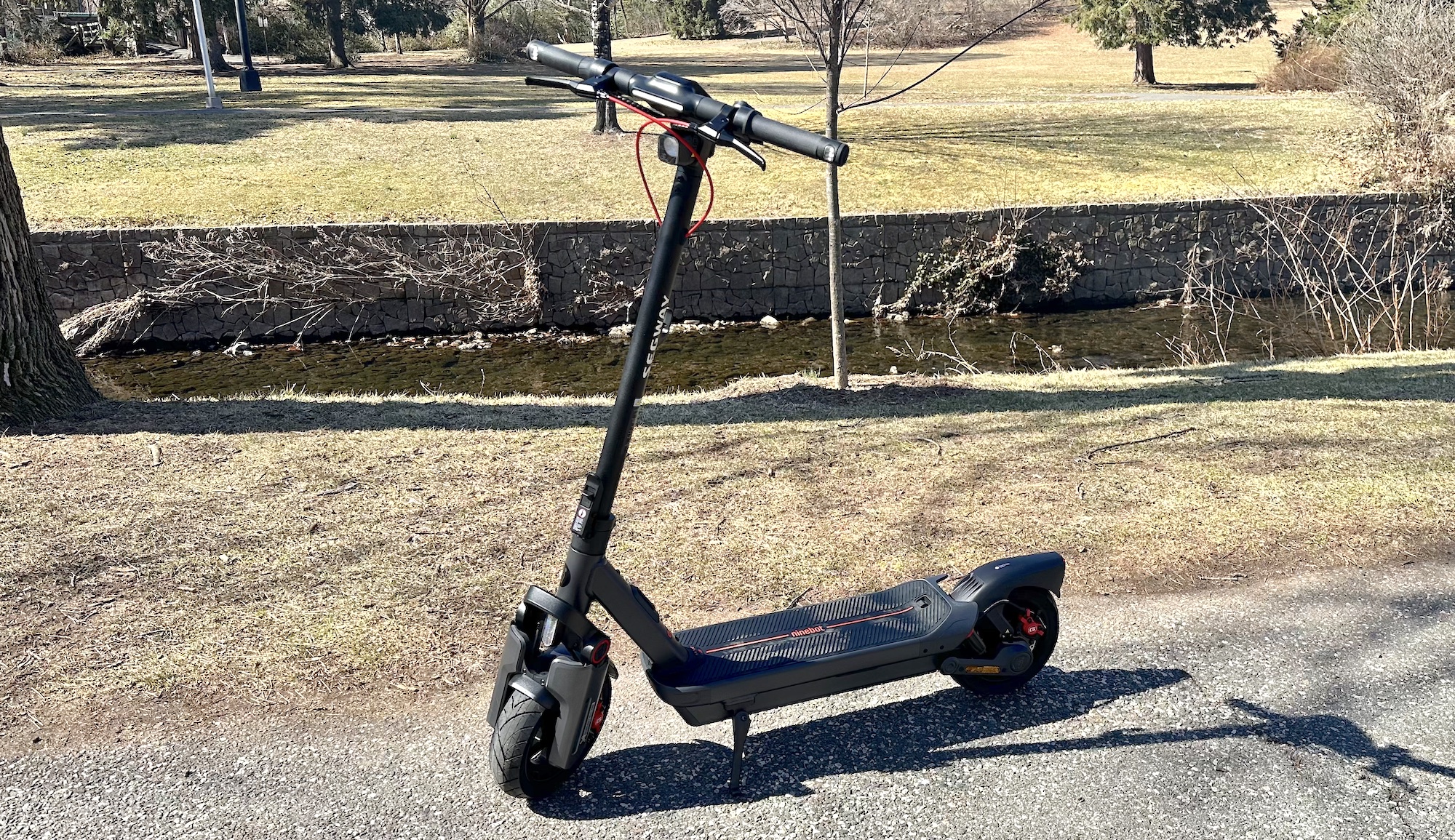

Specifications
Reasons to buy
Reasons to avoid
✅ You have a long commute In my testing, I was able to get around 17 miles on the Max G3; while that's short of its advertised 50-mile range, I was riding it up and down hills, so it'll be able to take you the distance.
✅ You want safety and security The Max G3 has turn signals built into its handlebars, auto AirLock, Traction Control, and is also equipped with Apple Find My integration, in case it gets lost or stolen.
❌ You need to carry it: If you want a scooter with a long range, the one tradeoff you need to make is weight. This scooter tips the scales at more than 50 pounds, so unless you like a workout, you'll want something lighter if you have to carry it up or down stairs.
The Ninebot Kickscooter Max G3 is the third generation of Segway's long-distance electric scooter; this model sees a new, slicker color scheme — black and red — and an updated design, including raked handlebars, hydraulic disc brakes, dual suspension, and even a loop through which you can attach one of the best bike locks.
In addition, the Max G3 has a longer theoretical range than the G2 (50 miles vs. 43) and a higher top speed (28 vs. 23 mph). In my day-to-day use, I found the G3's range to be about the same as the G2 — around 20 miles — but that was riding it up and down hills at top speed. If you're more conservative, and travel on more level ground, you should see a much better range.
I also like that the G3 also has turn signals in the handlebars (I wish Segway would add them to the deck too, like on Apollo's electric scooters), and the display is bigger and brighter than ever.
The G3's 850W motor (2000W peak) roared me up hills, and I liked that top speed allowed me to better keep up with local traffic. I also like that, similar to the G2, the G3 supports Apple Find My network as well as a digital locking system; they can't prevent your scooter being stolen, but at least it'll help you find it.
There are a few quirks that I would like Segway to work out with a firmware update: if you don't depress the throttle fully, the G3 has a tendency to jerk forward, and it also slows down for a split section after you drive over a pothole. Otherwise, this scooter will let you go the distance.
Another option around this price is the Apollo City, which has a higher top speed of 32 mph and crushes hills just as easily. It has a slightly shorter range, though.
- Read our full Segway Ninebot Kickscooter Max G3 review
Best electric scooter for hills


Specifications
Reasons to buy
Reasons to avoid
✅ You live in a hilly area The Apollo City's powerful motor was able to muscle us up a steep hill at a good 17 mph clip, better than almost every other scooter we've reviewed
✅ You have to ride in traffic With a top speed of 32 mph, the City is able to keep up with most city traffic. Plus, turn signals in both the handlebars and the deck make you a lot more visible to drivers.
❌ You live in a walkup apartment: At nearly 60 pounds and almost 4 feet long, the Apollo City is a very big scooter. You'll need some real muscle to get it around.
If you live in a hilly area, you're going to need a scooter that can muscle you up those inclines; there's nothing worse than having your ride slow to a crawl as you get to the top.
Thanks to the Apollo City's 500W motor, I was able to roar up and down even the steepest of hills with ease. And, with its top speed of 32 miles per hour, I could keep pace with most local traffic.
I also liked its full suspension and puncture-proof tires, which helped keep the ride smooth. Apollo's app even lets you customize the scooter's performance, and has a remote-locking function to engage the scooter's brakes, so that others can't ride it.
The Apollo City has something most other electric scooters lack: turn signals. It's a lot easier to let other drivers know you want to go left or right if you can switch on a light, rather than holding your arm out — even better, they're on both the deck of the scooter as well as the ends of each handlebar, so it's even easier for cars to spot you.
Still, at 57 pounds, this is a pretty heavy electric scooter — it's not my first choice if you have to carry it up a flight of stairs — and its latching mechanism is more finicky than you'll find on many other electric scooters. But, otherwise, this is a fun and fast electric scooter with a good safety feature built in.
- Read our full Apollo City review
Best electric scooter for kids


5. Segway Ninebot Kickscooter C2 Lite
Our expert review:
Specifications
Reasons to buy
Reasons to avoid
The Segway Ninebot Kickscooter C2 Lite is the best electric scooter for parents who want to get a scooter for their kids to safely ride around town. It's easy to learn, with a simple thumb lever on the right to control acceleration, and a hand brake on the left to stop the scooter.
Parents can set to max speed to either 7.5 mph or 9.9 mph depending on the age of their child and experience (the recommended age range is 6-10 years). I (and my kid testers) liked the C2 Lite's design, especially the color-changing LEDs on the bottom of the scooter, which make it look even cooler when it's dark outside. I just wish the scooter came in more colors than just blue.
While the C2 Lite has rubber wheels, it was still comfortable enough to ride over small bumps, and its 120W motor gave it just enough oomph for our test kids to enjoy the ride safely.
The C2 Lite has a rated battery life of up to 70 minutes — you'll most likely see closer to 50 depending on how hard your kid decides to ride it — but there's a big clear battery life indicator to let you know how much juice is left.
If your child is a little older, you might also want to check out the Segway C2 (ages 6-12), which has an even sleeker folding design and adjustable handlebars, but the same top speed as the C2 Lite; or the C2 Pro (ages 6-14), which has a higher top speed of 12.4 mph, and has a Bluetooth speaker built in.
- Check out our full guide to the best electric scooters for kids
Best electric scooter for commuters


Specifications
Reasons to buy
Reasons to avoid
✅ You need something really light Coming in at just 26 pounds, the Unagi is one of the lightest scooters we've tested, and was really easy to carry around town.
✅ You want something sleek The Unagi is the slickest-looking scooter we've reviewed; it has a unique carbon-fiber contoured stem and handlebars, and looks unlike anything else out there.
❌ You have to ride over potholes: With rubber — not air-filled — wheels and no suspension, the Unagi gives you a rougher ride over roads that aren't well maintained; we definitely felt the bumps more.
Thanks to its dual 250W motors, the Unagi Model One Voyager powers up hills with aplomb, zipping along twice as fast as other scooters with just a single motor. Using both motors (you can opt to use just one) causes the battery life to drop significantly lower than the scooter's advertised 20-mile range.
The Unagi also has a great display that's bright enough to easily see even in daylight; we also liked its intuitive controls and loud, electric-sounding horn. It has both head and taillights, the latter of which blinks rapidly when you hit the brakes.
I was also enamored with the Unagi's sleek design; its carbon-fiber front post changes in geometry from a circle to a triangular shape, making for an intriguing look. No other scooter on the road looks quite like it.
At 26 pounds, the Unagi is also super-light, which makes it really easy to carry around — helpful if you have to lug it up stairs. However, part of what makes it so lightweight are its small rubber tires, which I found delivered a much rougher ride over potholed streets.
All of this comes at a price: The Model One Voyager costs $1,490 — and it's often on backorder. However, Unagi's scooter rental program lets you rent the Voyager for $79/month, or the Unagi Model One Classic for $59/month with an annual subscription.
- Read our full Unagi Model One Voyager review
Best scooter for carrying stuff
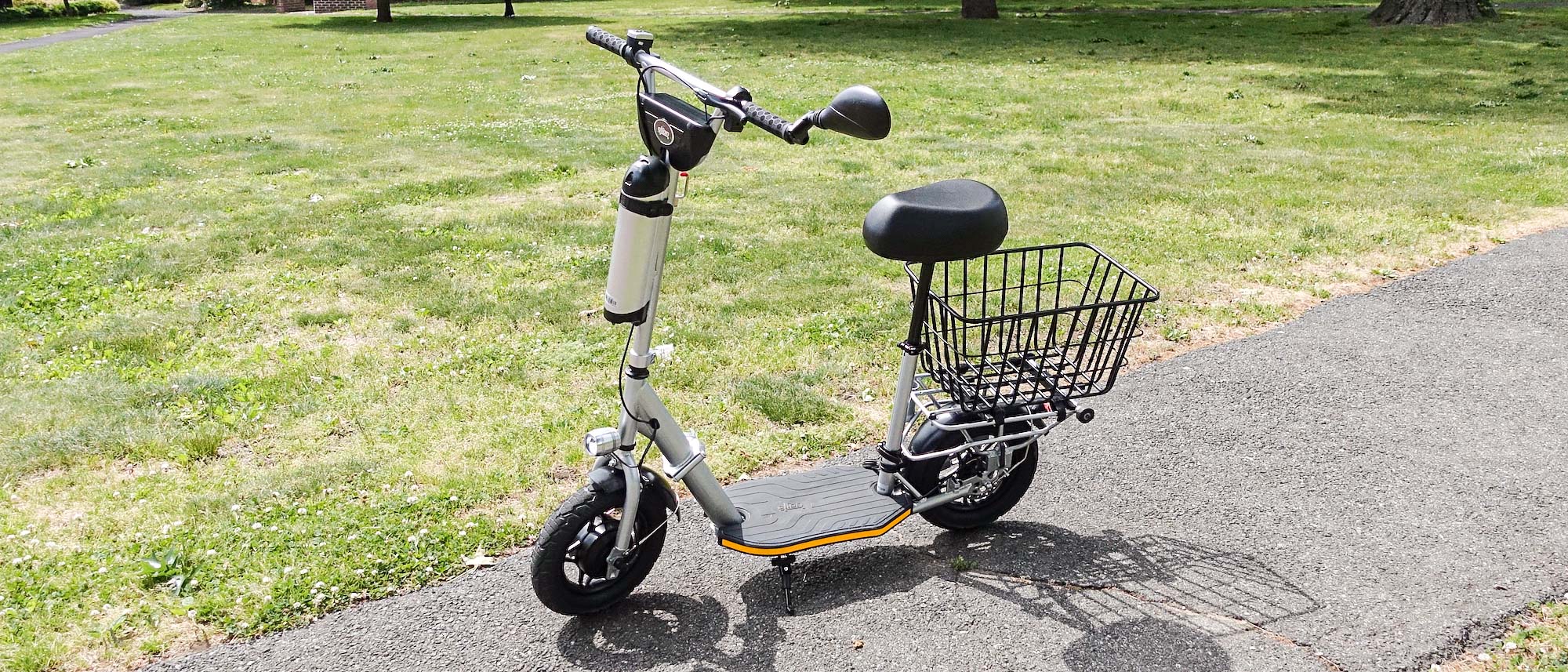

Specifications
Reasons to buy
Reasons to avoid
The Glion Balto is the best electric scooter for those who want something they can use to pick up groceries or carry things to and from the store. And, it can fold up on itself, making it much easier to store.
I also really liked that the Balto comes with a side-view mirror, lights, and turn signals, which made me feel safer in traffic. And, the Balto's battery is removable, so you don't have to park the scooter near an outlet. As a bonus, you can also use the battery to charge your phone — but you'll need to buy an adapter first.
If you're looking for another scooter with a basket, you should also check out the Razor EcoSmart Cargo; it has a bit more zip than the Balto and its basket can be swapped out for an extra seat, but it can't fold up, and its chain drive is a bit noisy.
- Read our full Glion Balto review
Best offroad electric scooter
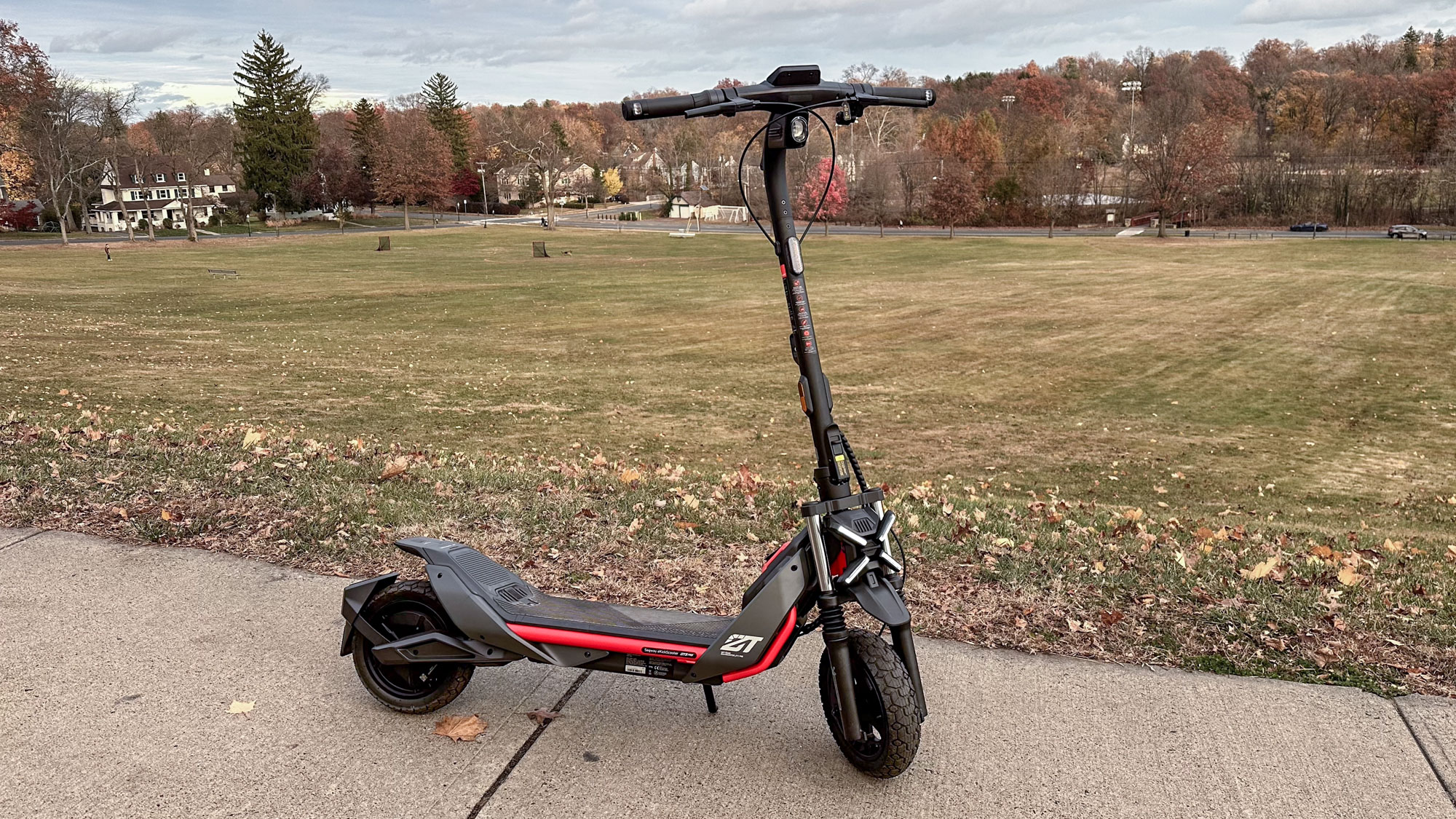
Specifications
Reasons to buy
Reasons to avoid
✅ You want to go anywhere This scooter can handle inclines up to 20-25%, has dual suspension, large tires, IP6 waterproofing, and a pretty great range.
❌ You have to carry it: At 65 pounds, the ZT3 Pro is a heavy scooter; even though you can fold it, it's not something you want to lug up and down flights of stairs.
With huge 11-inch tires, full suspension, and a 1600W peak motor, the Segway ZT3 Pro is designed to be taken almost anywhere outdoors. I certainly had a lot of fun riding it both on- and offroad around my town.
I was able to comfortably take it up a pretty steep grassy hill — which proved a touch too steep at the end — where lesser scooters would have bowed out.
What's more, the ZT3 Pro really looks the part; it has some great gray and red accents, and the scooter's large X-shaped running light in the front sets it apart from others. The handlebars were easy to grip even on bumpy terrain, and the controls on either side, such as the turn signals, were easy to reach.
Like some of Segway's newer scooters, the ZT3 Pro also has Apple's Find My support and a remote electronic locking feature. While I still recommend using one of the best bike locks, it's nice to have a bit of extra insurance.
Also like most electric scooters, the advertised max range of the ZT3 Pro (43.5 miles) is a highly optimistic figure. If you ride it like I did — at top speed — you're more likely to get around 20 miles before it needs a recharge.
I also wish its top speed were a little higher than 24.9 mph (check out the Apollo City if you're looking for something faster), but otherwise, I have few quibbles.
- Read our full Segway ZT3 Pro review
Also tested
We've tested a lot of electric scooters at Tom's Guide, and while many are great, not all can crack our top list. Still, if none of the picks above satisfy your needs, you may want to check out these below.
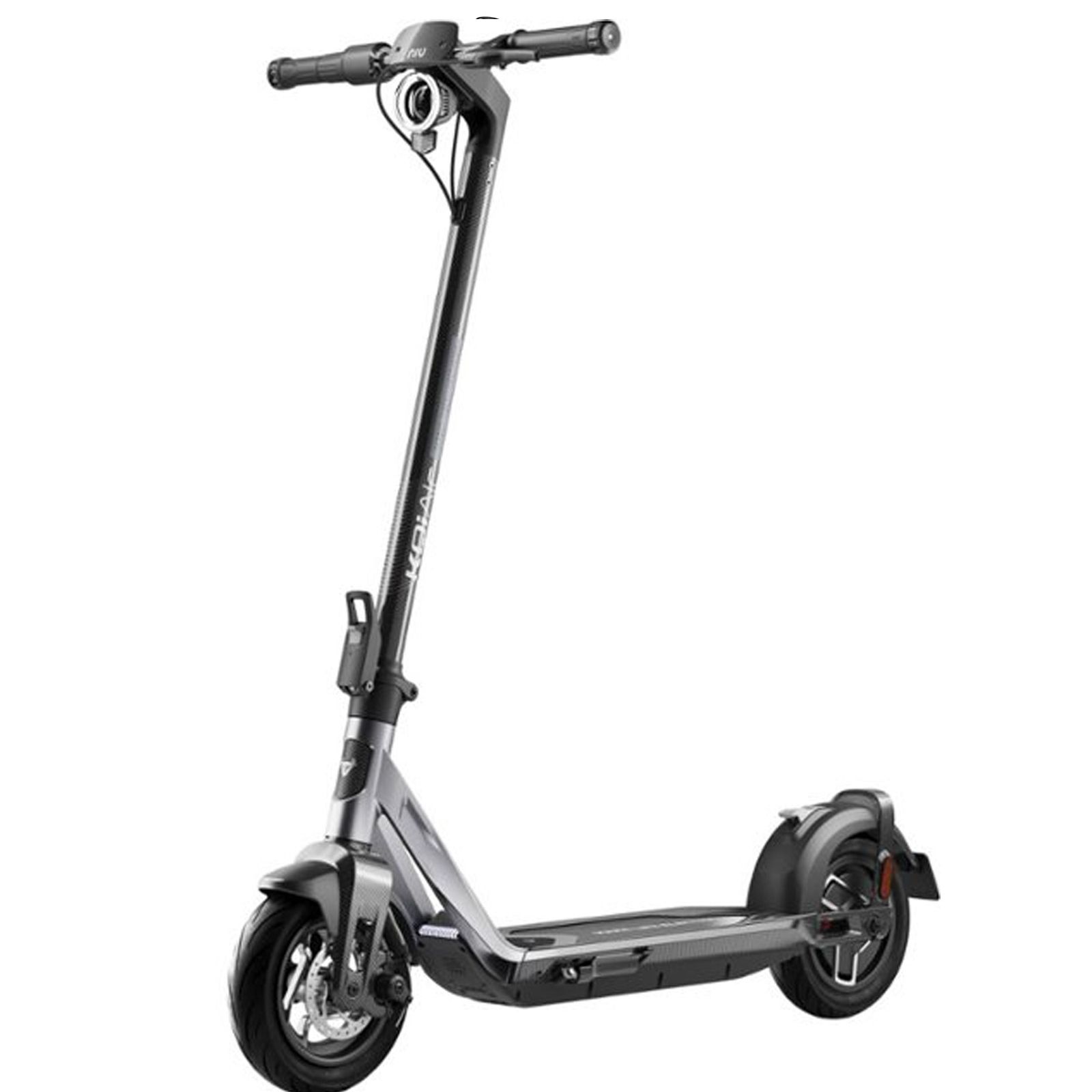
The KQi Air offers the best combination of power, performance, range and weight we've ever seen in an electric scooter. And, it has a few fun extra features — like antitheft — too. However, it's getting hard to find.
Read our full NIU KQi Air review
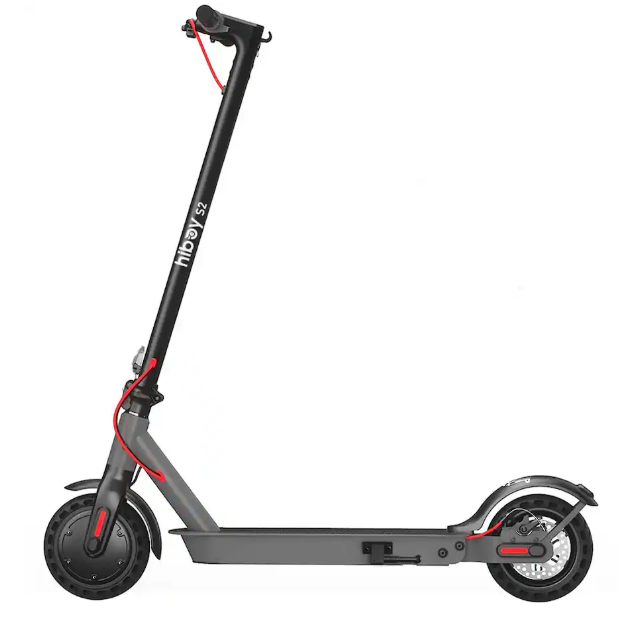
A great scooter for those on a budget. It has regenerative and mechanical disk brakes and lights, and its 350-Watt motor was good for all but steep hills. Its battery life is good for a scooter in this price range, but expect to charge it every few days if you plan on doing a lot of riding.
Read our full Hiboy S2 electric scooter review
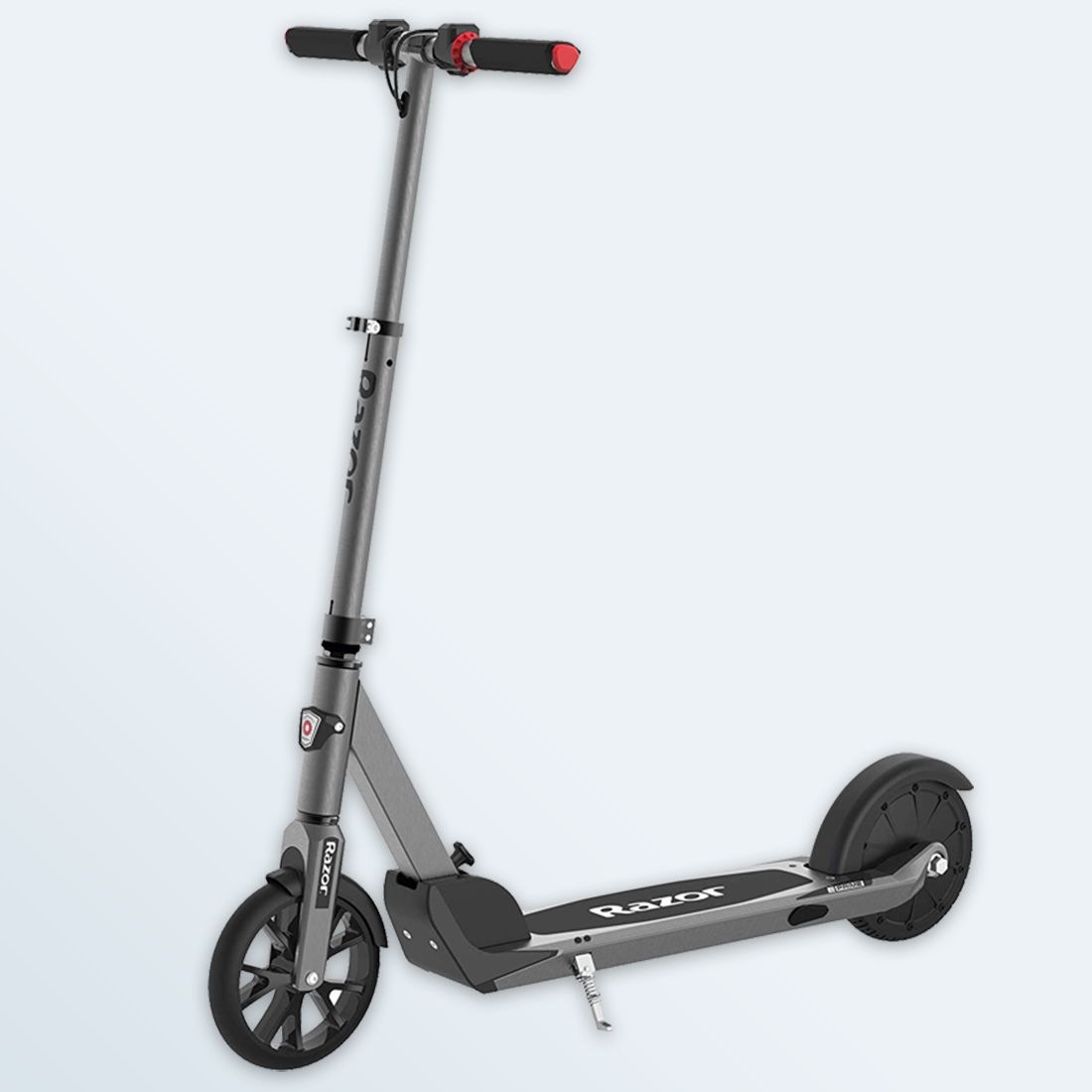
While this scooter might be underpowered for bigger riders, it's a good option for teems, with a headlight, brake-activated taillight and bike lock security slot.
Read our full Razor ePrime III review
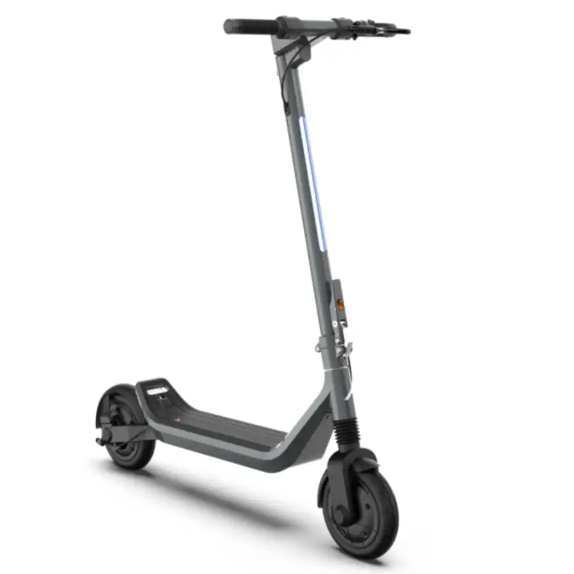
While a hefty 46 pounds, the Go has an excellent range of up to 30 miles, a top speed of 28 MPH, dual 350W motors, big air-filled tires and full suspension, which gave us a long, comfortable ride. And, it has turn signals and an app that lets you customize the scooter's performance.
Read our full Apollo Go review
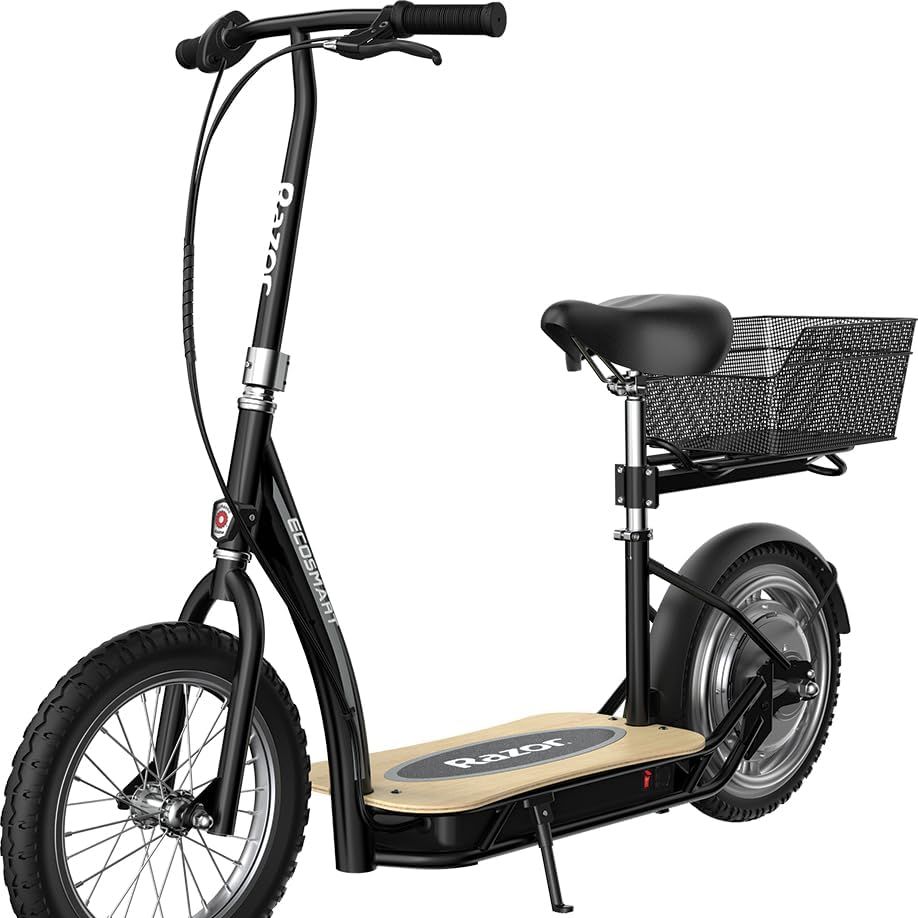
While not quite as powerful some other sit-down scooters, the Metro HD has a quiet motor that's still pretty strong. It typically sells for less than $500, has a large basket, and is comfortable to ride.
Read our full Razor EcoSmart Metro HD review
Scooter accessories you'll need
The majority of our picks on this page are for adult riders. However, if you're looking for something for your child, be sure to check out the best electric scooters for kids.
It's also important that you wear a helmet while riding a scooter. In the event of an accident, it could very well save your life, or prevent a traumatic brain injury. Our current top pick is the Giro Register MIPS, which is light, comfortable, and very affordable. For other options, check out our guide to the best bike helmets.
You'll also want to pick up one of the best bike locks to make sure that your scooter doesn't get stolen. Considering that it's a little tricker to lock up a scooter than a bike, a chain lock, like the Kryptonite New York Legend Chain 1515 & New York Disc Lock, might be your best option. It's heavy, but it's incredibly hard to cut.
How to choose the best electric scooter for you
How are you going to use the scooter?
How you plan to use your scooter will go a long way to determining the best electric scooter for your needs. If you're using it as a "last-mile" vehicle — getting you from your home to the bus or train, and then from the bus or train to your office — you'll want to prioritize an electric scooter that's small and light. Look for a scooter that weighs between 20 and 30 pounds.
You'll also want an electric scooter that folds quickly and easily. There's nothing worse than having to fumble with a latch when you're rushing to catch a train — and your fellow passengers will appreciate it, too.
Are you riding on hilly terrain?
Where you plan to ride your scooter should also help determine your purchase. If you live in a flatter area, a scooter with a 300W to 350W motor should give you all the power you need. If, however, you live in, say, San Francisco, you'll want a scooter with a stronger motor to get you around. Larger individuals should also consider electric scooters with more powerful motors.
Battery life/range: After price, this will be the next deciding factor for many. It's a bit difficult to provide an accurate estimate of battery life and range, because it's dependent on a variety of factors, including the rider's weight, the temperature, and the terrain — if you're riding on flat surfaces, you'll be able to go much farther than if you're riding up and down hills. Battery life is typically measured in Amp Hours (aH); the higher the number, the longer you'll be able to ride.
Speed: Most electric scooters will top out at around 20 miles per hour on a flat road. That's plenty fast for most uses, but there are scooters that will zip along at speeds in excess of 25-30 MPH.
Motors: The majority of electric scooters will have a single hub-mounted motor (meaning the motor is built into the wheel itself), and will typically have a power rating of around 350 Watts. If you live in a particularly hilly area (or want to go fast) you'll want a motor with higher wattage.
Tires/suspension: There's nothing worse than a jarring ride as you bump over potholes and cracks in the road. To mitigate this, most electric scooters are now outfitted with air-filled (pneumatic) tires, which help cushion things. Others will have front or rear suspension (or both), which makes for an even more comfortable ride. Bigger tires also mean a more stable ride, too.
Lights: If you plan on riding your electric scooter in the early morning, at dusk, or among city traffic, it's worth getting a model with lights so you can see and be seen. Look for electric scooters with headlights and taillights — the better ones will have taillights that flash when you apply the brakes. Unfortunately, turn signals are rare, so you'll have to look out when changing lanes.
How much does an electric scooter cost?
For many, the price of an electric scooter will be the starting point for any buying decision. Here's a quick rundown of what to expect at each price tier.
- $100 to $200: These scooters tend to be very inexpensive and come with smaller motors, low-capacity batteries and simple braking mechanisms. This is where you'll also find most electric scooters for kids, but for adults, I would recommend you look for something in the $300-$400 range.
- $300 to $400: This is where you'll find the best budget scooters for adults that are actually worth owning. You'll get the basics, though most won't be great for hills or long distances.
- $400-$600: These scooters can be considered as either mid-range or entry-level commuters, and they tend to include bigger wheels, slightly longer ranges, fast-charging batteries and the ability to scale hills.
- $600 and up: These scooters are in the premium range. You can expect a longer, more comfortable ride, along with larger tires, faster speeds, disc brakes and better suspension.
FAQs
What's a good speed for an electric scooter?
The vast majority of electric scooters are designed to travel at speeds of between 15 and 20 miles per hour. In the next tier are scooters that can travel between 20 and 25 mph; these tend to be a bit bigger, but can be good for keeping up with traffic.
Then there are scooters that can go 35 mph or faster. I haven't tested many of these, because I value my life.
Electric scooters made for kids will typically have a top speed of 12-15 mph, though the better ones will let you set the limit at 6 or 9 mph, so you can ensure your child learns how to use it safely.
I need a scooter that can get me up hills. What should I look for?
If you live in a hilly area, you're going to need a scooter with enough muscle, so you're going to want to look for the wattage of its motor.
At the bare minimum, you should look for a scooter with a 350W motor; I've found this works pretty well, though I would slow to around 6 mph at the top of hills, which is barely fast enough to stay on the scooter.
The sweet spot in terms of price and performance is around the 500W range; you're not going to spend too much, but you'll have plenty of oomph for getting around.
Many companies will try and trick you into thinking their scooters are more powerful than they actually are; they'll often list the peak wattage for the motors, which are often twice their normal power. This means that the motors can deliver a shorter burst of power, but it will greatly affect the range.
Look for both peak or max wattage, as well as nominal wattage, the latter of which will give you a better indication of how well a scooter will perform.
What are the safety features for electric scooters?
Most, if not all, electric scooters will have some sort of reflective surface so that you'll be more visible when a car's lights shine on you. As you go up in price, electric scooters will have headlights and tail lights — some tail lights will even blink when you apply the brakes.
Speaking of brakes, almost all scooters have some sort of handbrake; some will have a secondary brake that can be activated by pressing down on a scooter's rear fender.
Almost all electric scooters will also come with a bell or horn so you can warn others that you're approaching — but this doesn't mean you should ride recklessly. And, it's important to always wear a helmet when riding an electric scooter.
How we test the best electric scooters
There are dozens of varieties of electric scooters on the market, but only a few are worth bringing home to ride.
To test electric scooters, we ride them around a New Jersey suburb and, if the scooter is light and small enough, we take it on a train and into New York City. As increasing numbers of people are bringing scooters on public transportation, we like to see how easy it is to lug a scooter up stairs, and to see how well it can be stowed under a seat.
Once in New York, we ride the scooter some more to see how well it handles potholes and other road obstacles. We also take each scooter up a street with a 6% grade, to see how well its motor performs under strain. More powerful scooters will be able to maintain a somewhat consistent speed, while lesser models will slow to a crawl.
In addition, we evaluate each scooter to see if it can reach its advertised top speed, and how close its range comes to the company's estimates. Spoiler alert: most electric scooters will get around 60% of their advertised range.
As part of the testing process, we also evaluate a scooter's brakes, lighting, and design, as well as its price.
For entry-level and commuter scooters, we primarily consider things such as portability — how easy it is to fold up to bring on the bus or other types of public transportation, or how light it is to cart up a long stretch of stairs — along with range and top speed.
Commuter scooters don't need to be the fastest things around, but it helps if they can manage at least 15 mph for a sustained time so that you're not holding up anyone in the bike lane.
We also looked at braking mechanisms, including hydraulic disc brakes, which are the best for stopping quickly and safely at top speeds, and mechanical disc brakes, which are considered the second best for their reliability. Extra features like headlights, reflectors and available speedometer also factored into our commuter picks.
For the performance-based, higher-end rides, we consider range, speed and braking mechanisms, but we also looked at suspension. If you're paying upward of $1,000 for an electric scooter, it should be comfortable to ride and able to scale curbs, hills and bumpy roads.
For our picks for kids, electric scooters in this category don't offer the same bells and whistles as commuter models. For instance, many of the child and preteen picks don't fold up for portability, so we considered overall weight and size for kids with longer rides to school.
We also stuck with scooters that topped out at 15 mph for utmost safety. And like our commuter and high-performance picks, we pored over reviews from parents where accessible.
Get instant access to breaking news, the hottest reviews, great deals and helpful tips.

Michael A. Prospero is the U.S. Editor-in-Chief for Tom’s Guide. He oversees all evergreen content and oversees the Homes, Smart Home, and Fitness/Wearables categories for the site. In his spare time, he also tests out the latest drones, electric scooters, and smart home gadgets, such as video doorbells. Before his tenure at Tom's Guide, he was the Reviews Editor for Laptop Magazine, a reporter at Fast Company, the Times of Trenton, and, many eons back, an intern at George magazine. He received his undergraduate degree from Boston College, where he worked on the campus newspaper The Heights, and then attended the Columbia University school of Journalism. When he’s not testing out the latest running watch, electric scooter, or skiing or training for a marathon, he’s probably using the latest sous vide machine, smoker, or pizza oven, to the delight — or chagrin — of his family.
